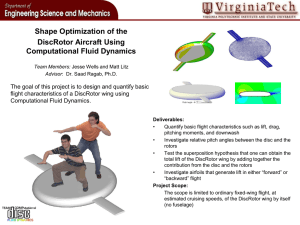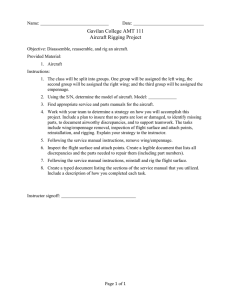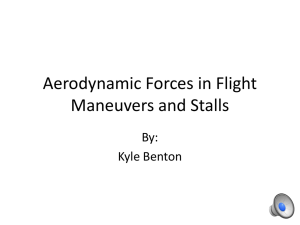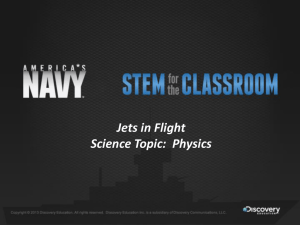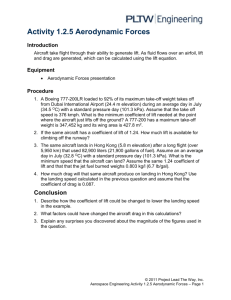Flying Scholarship Assignment #2
advertisement
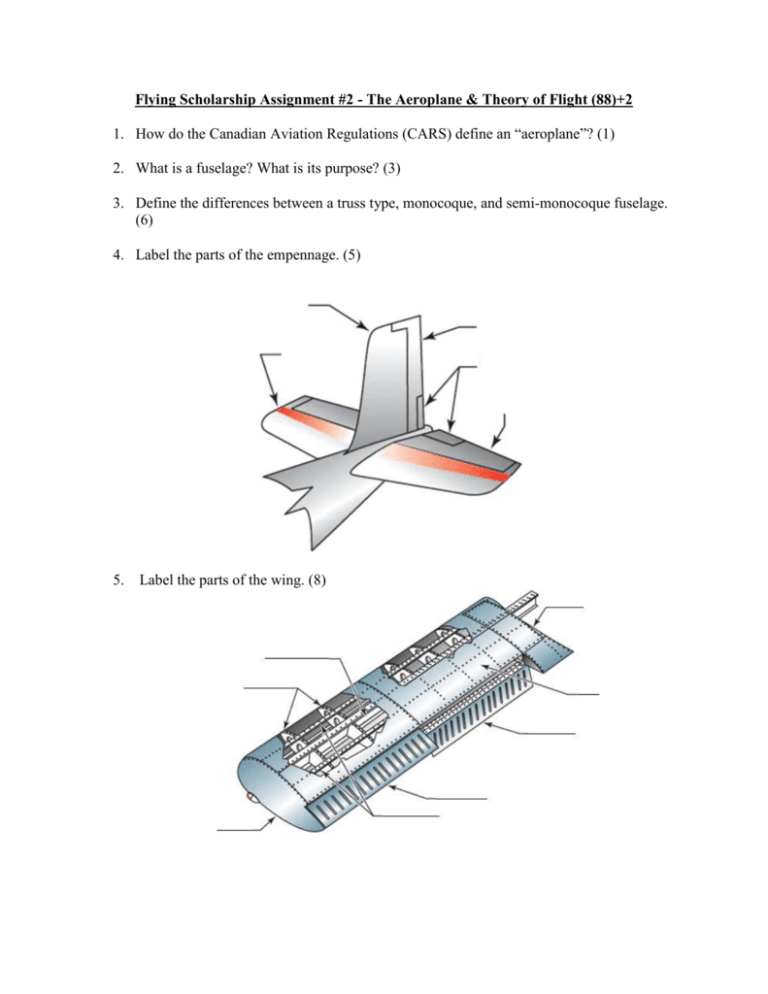
Flying Scholarship Assignment #2 - The Aeroplane & Theory of Flight (88)+2 1. How do the Canadian Aviation Regulations (CARS) define an “aeroplane”? (1) 2. What is a fuselage? What is its purpose? (3) 3. Define the differences between a truss type, monocoque, and semi-monocoque fuselage. (6) 4. Label the parts of the empennage. (5) 5. Label the parts of the wing. (8) 6. Define the following terms: (5) a. Spar b. Wingspan c. Chord – d. Camber 7. What are three advantages of a tricycle landing gear configuration? (3) 8. What are the four forces acting on an aircraft in flight? (4) 9. Briefly explain Bernoulli’s Principle and how it creates lift on a wing. (2) 10. What is downwash? On what principle does it work? (2) 11. What point does all weight in the aircraft act through? (1) 12. What is thrust? How is it produced? (2) 13. What is drag? What are the two main types? Briefly describe each type. (7) 14. Sketch and label the airflow around an airfoil. (4) 15. When is an aircraft in equilibrium? (1) a. When taxiing on the ground at a constant airspeed b. When it is diving c. When in straight and level flight at a constant airspeed d. When at rest on the ground 16. Briefly define and describe a “couple” with an example. (3) 17. Define the following terms: (6) a. Relative Airflow b. Angle of Incidence c. Angle of Attack – d. Center of Pressure e. Boundary Layer f. Load Factor – 18. Describe aileron drag. What can be done to prevent it? (3) 19. What are the five factors which affect lift? (5) 20. How is the Lift/Drag Ratio determined? (1) 21. What is Wash-Out? What does it do to the wing? (2) 22. What is the purpose of flaps? List three main advantages.(4) 23. Describe the purpose and operation of the following devices: (10) a. Spoilers/Dive brakes b. Wing Fences c. Slats – d. Slots e. Vortex Generators Bonus: (2) What is the load factor at a 60 degree angle of bank? If the aircraft in question stalls at 40 knots in level flight, what will the stall speed be in the turn?

